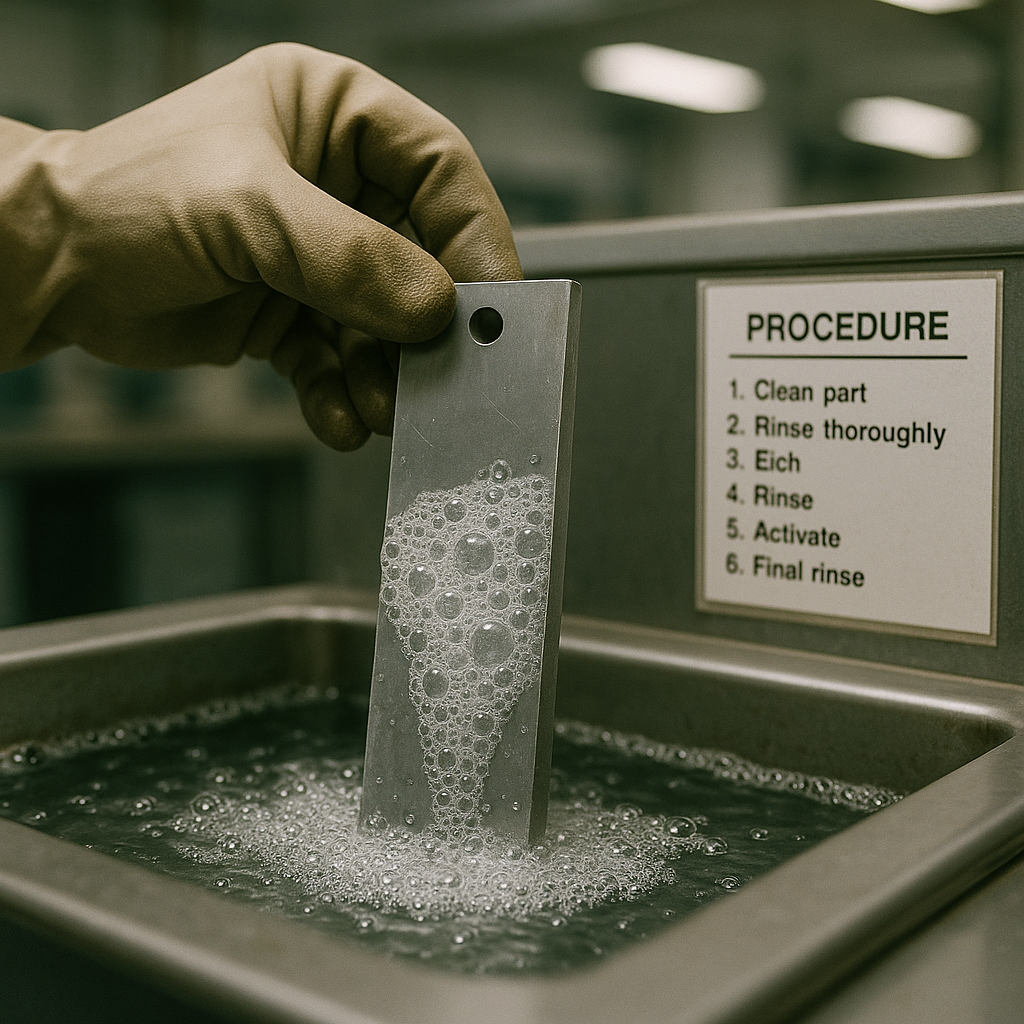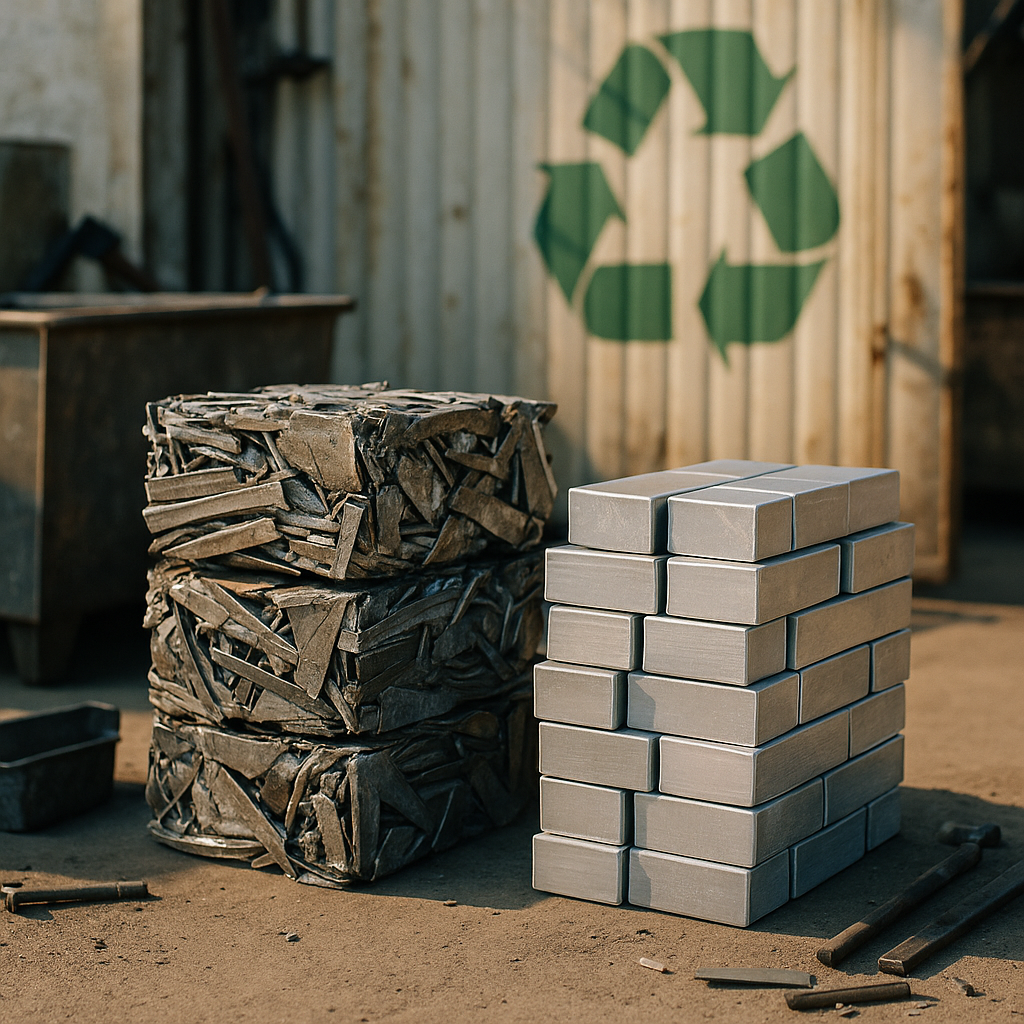5901 Botham Jean Blvd, Dallas, TX 75215
De-Zincing for Galvanized Steel: Why & How to Remove It
November 5, 2025Why would anyone want to remove a protective coating designed to prevent rust? The process of de-zincing galvanized steel involves stripping away the zinc layer applied by manufacturers to steel surfaces. This zinc coating acts as a barrier against corrosion, extending the life of steel products used in construction, automotive, and industrial applications.
Removing the zinc coating becomes necessary when galvanized steel undergoes welding, grinding, or recycling. When heated during welding, the zinc coating releases toxic fumes that pose serious health risks to workers. These zinc fumes can cause metal fume fever and other respiratory issues, making proper removal a critical safety requirement.
The de-zincing process is also crucial in steel recycling operations. Scrap metal facilities must remove zinc coatings to ensure clean steel recovery and prevent contamination during melting.
Why Is It Necessary To Remove Zinc Before Welding Or Recycling?

Removing zinc is essential for ensuring safety and process efficiency. When galvanized steel is heated to welding temperatures, the zinc coating turns into toxic fumes, posing significant health hazards. These vapors contain zinc oxide particles that can lead to metal fume fever, commonly referred to as zinc poisoning.
The health effects are both immediate and severe. Exposure to zinc fumes can cause symptoms such as a metallic taste, throat irritation, fatigue, and fever up to 102°F. According to American Welding Society standards, zinc coatings must be removed at least 1-4 inches from the weld zone on both sides of the material.
Beyond safety, zinc poses operational challenges during recycling. It vaporizes at much lower temperatures than iron, complicating material recovery. The vaporized zinc forms fine dust particles, necessitating costly collection systems.
Dust containing high zinc levels cannot be reused in blast furnace operations. Zinc creates what industry professionals refer to as a “zinc cycle” within furnace systems. This disrupts gas permeability, deposits zinc in coke skeleton gaps, reduces coke strength, and impairs furnace operation.
Environmental considerations also necessitate zinc removal for sustainable metal reuse. Uncaptured zinc dust often ends up in landfills, losing material value and risking environmental contamination. Zinc particles can leach into soil and groundwater, impacting local ecosystems.
The de-zincing process enables cleaner scrap metal processing with several benefits:
- Eliminates toxic fume generation during thermal processing
- Prevents equipment damage from zinc contamination
- Reduces waste disposal costs and environmental liability
- Enables higher-quality recycled material production
Proper zinc removal is advantageous for material recovery operations. Clean scrap metal fetches higher market prices and requires less complex processing equipment. Although the separation process adds operational steps, it enhances economic returns and environmental compliance for recycling facilities.
How do muriatic acid and vinegar compare for de-zincing?

Muriatic acid and vinegar represent two distinct approaches to zinc removal, each with significant trade-offs that recycling facilities must carefully consider. Muriatic acid, also known as hydrochloric acid (HCl), delivers rapid results but poses substantial safety risks. Vinegar, containing acetic acid, offers a much safer alternative but requires considerably longer processing times.
The differences in reaction time between these two acids are dramatic. Muriatic acid can strip zinc coatings in just a few minutes, making it highly efficient for high-volume operations. This is because hydrochloric acid is much stronger than acetic acid, resulting in a more aggressive chemical reaction with zinc. In contrast, vinegar requires extended soaking periods, often overnight for light coatings and up to several days for heavier galvanized materials.
Safety considerations create the most pronounced distinction between these de-zincing methods. Muriatic acid produces dangerous fumes that can cause severe respiratory irritation and requires robust ventilation systems to prevent toxic gas buildup. Workers must wear full personal protective equipment, including eye protection, chemical-resistant gloves, and respiratory protection. The corrosive nature of the acid can cause severe skin burns and damage to equipment, concrete floors, and nearby metal surfaces through fume exposure alone.
Vinegar poses far fewer safety hazards, though proper ventilation is still important during extended soaking operations. The primary safety concern with vinegar involves the hydrogen gas produced during the zinc dissolution process, which requires adequate ventilation to prevent accumulation. While vinegar can cause mild skin irritation, it does not produce the severe chemical burns associated with muriatic acid exposure.
For recycling operations, the choice between muriatic acid and vinegar often depends on processing volume, available safety infrastructure, and regulatory requirements. Facilities with proper ventilation systems and trained personnel may benefit from muriatic acid’s speed for large-scale operations. However, smaller operations or those prioritizing worker safety may find vinegar’s slower but safer process more suitable. It is recommended to conduct pilot tests with both methods to determine which approach best fits your facility’s specific operational requirements and safety capabilities.
What is the step-by-step process to chemically remove zinc?

Chemical zinc removal requires careful attention to safety and proper sequencing. The process involves controlled acid dissolution followed by neutralization and protection steps.
Stage 1: Acid Submersion Process
Submerge the galvanized metal completely in your chosen acid solution. Vinegar offers the safest approach, requiring 30 minutes for thin coatings and up to several hours for heavy-duty galvanized items. Muriatic acid works within minutes but demands extensive safety precautions, including proper ventilation and protective equipment.
Monitor the reaction closely as bubbles form on the metal surface. These bubbles indicate zinc dissolution. The reaction continues until bubbling stops completely, signaling that the accessible zinc coating has been removed.
For large-scale operations, citric acid provides an effective middle ground. Mix approximately half a cup of citric acid powder per gallon of water. This solution strips zinc in 30 minutes to several hours depending on coating thickness while remaining safer than muriatic acid.
Stage 2: Neutralization Requirements
Remove the metal immediately when bubbling ceases, as timing is critical to prevent acid damage to the underlying steel substrate.
Place the item directly into a basic solution containing washing soda or borax mixed with water. This neutralization step removes residual acid that could continue attacking the steel. Simple water rinsing is insufficient, as acid traces can remain embedded in surface irregularities.
Allow the metal to remain in the alkaline solution for several minutes. This ensures complete neutralization of any remaining acid compounds that could cause accelerated corrosion later.
Stage 3: Final Processing and Protection
Rinse the neutralized metal thoroughly with clean water to remove all chemical residues. Wire brush the surface if needed to remove any remaining zinc particles or reaction byproducts.
Apply a protective oil coating immediately after drying. The now-exposed raw steel will rust rapidly without protection. Light machine oil or penetrating oil provides temporary protection during handling and storage.
For permanent installations, consider applying primer or other protective coatings promptly. The zinc removal process creates highly reactive steel surfaces that require immediate attention to prevent oxidation damage.
Conclusion: Sustainable De-Zincing for a Circular Economy

Removing zinc coatings from galvanized steel requires careful consideration of both safety and environmental impact. Traditional DIY methods using vinegar or muriatic acid offer a balance between convenience and effectiveness. However, the future lies in innovative hydrometallurgical processes that achieve zero waste discharge while completely recycling both steel and zinc components. These water-based methods transform what was once waste into valuable resources, with recovered zinc sulfate serving as fertilizer and clean steel ready for reuse in manufacturing.
The circular economy approach to de-zincing represents a significant step toward sustainable resource recovery in the metals industry. As these technologies progress, waste management facilities can implement processes that eliminate environmental discharge while maximizing material recovery. For municipalities and businesses seeking comprehensive recycling solutions that align with circular economy principles, contact Okon Recycling at 214-717-4083.
